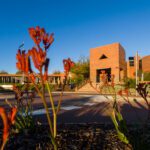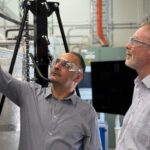One of science’s unresolved questions – Where did all of the antimatter at the origin of the Universe go? – may now be explored with the help of Curtin University research.
Professor Igor Bray, Head of Curtin’s Department of Physics and Astronomy, said the University’s theoretical physics research group utilised supercomputers at the National Computational Infrastructure (NCI) and the Pawsey Supercomputing Centre to look at ways to create neutral antimatter in a laboratory to help resolve the long standing problem of matter-antimatter asymmetry in the Universe.
“Laws of Physics predict equal amounts of matter and antimatter at the origin of the Universe, but it appears that presently this is not the case. In order to explore this, scientists require an adequate amount of antimatter in the laboratory, something that is currently not available,” Professor Bray explained.
Scientists hope to measure how antimatter behaves under gravity, and its various energy levels to the same precision as is possible with ordinary matter. Antimatter must be in a neutrally charged state in order to be used in such experiments.
“The simplest neutral antimatter is the antihydrogen atom, which is a bound state of an antielectron, also called a positron, and an antiproton. The challenge for scientists to date has been to find a way to create the antihydrogen in a laboratory in enough quantity to be a viable material source for experiments,” Professor Bray said.
“In our research, we looked at ways to create a suitable amount of antihydrogen atoms. One mechanism is to collide slow antiprotons with positronium, a bound state of an electron and a positron. Our calculations discovered that when positronium is in a laser-prepared excited state, the number of antihydrogen atoms created can be enhanced by a factor of 1,000.
“The competitive mechanism for creating antihydrogen that this research has uncovered will be used at CERN, the European Organisation for Nuclear Research, where three different groups are in a race to make antihydrogen in sufficient quantities.”
The calculations for this research required over 1 million CPU hours following a decade of computer code development.
“This discovery would not have been possible without the modern supercomputers now available in Australia,” Professor Bray said.


